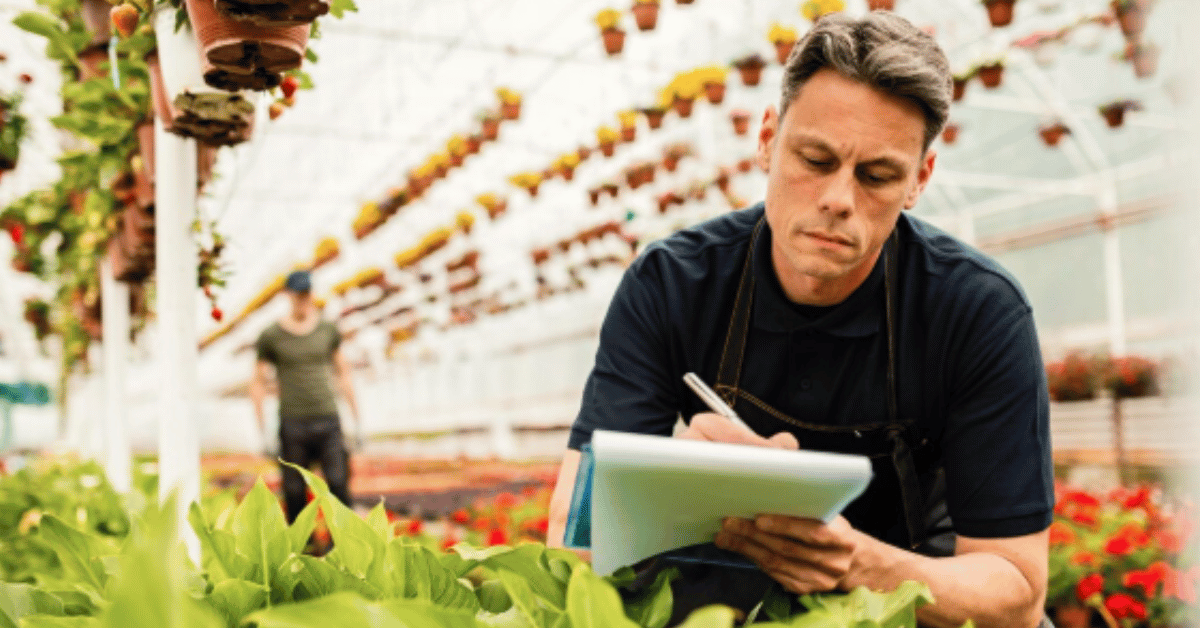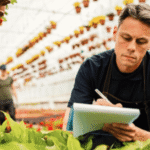Mathfarm is an emerging concept that blends mathematics with agriculture, aiming to revolutionize the way farming is understood, planned, and executed. Within the first layer, it brings attention to the pressing needs of modern farmers: efficiency, sustainability, and resilience in the face of unpredictable climate and market fluctuations. Mathfarm is not merely a digital platform or a single method; it is an evolving framework that uses quantitative analysis, predictive modeling, and decision-making tools to support farmers and agricultural researchers. In simpler terms, it answers the critical question: “How can numbers and formulas guide real-world farming?” By applying principles of algebra, geometry, probability, and data science, Mathfarm empowers agriculture to move beyond traditional guesswork. This innovative approach intends to improve crop yield, optimize resources like water and soil, and forecast market dynamics that affect farming profitability. Mathfarm, therefore, is not a buzzword but a tool that bridges theoretical mathematics with practical land use, ensuring that every decision made in farming has a scientific backbone.
As agricultural challenges become increasingly complex—ranging from water shortages to pest outbreaks—Mathfarm emerges as a reliable ally. Farmers who once depended on generational experience now find themselves balancing tradition with algorithmic guidance. This does not replace intuition; rather, it strengthens it. For example, a farmer might know when the rains usually arrive, but Mathfarm uses probability and weather data to predict the precise range of expected rainfall. Similarly, soil fertility decisions, once based on observation, are now supported by nutrient flow models. In this way, Mathfarm serves as a field guide for the twenty-first century, harnessing the power of mathematics to make agriculture smarter, more sustainable, and future-ready.
“Mathematics is the language of patterns,” one agricultural analyst remarked, “and farming is nothing if not a pattern repeated across seasons.” Mathfarm takes this philosophy seriously by embedding structured logic into the heart of farming practices. It promises to not only improve productivity but also conserve the environment through informed decision-making.
The Core Philosophy of Mathfarm
Mathfarm rests on the philosophy that mathematics can be the foundation of predictive and sustainable agriculture. Traditional farming often relies on observation, memory, and intuition, but these methods are prone to error in unpredictable modern climates. Mathfarm proposes that structured formulas and statistical analysis can balance out the uncertainty, providing a farmer with decision-making tools that reduce risk and maximize reward.
At its core, Mathfarm emphasizes measurement. Every seed planted, drop of water used, or kilogram of fertilizer added can be quantified. Once quantified, these numbers can be modeled into equations that reveal efficiency levels, waste points, and opportunities for improvement. A farmer using Mathfarm may record daily data on soil moisture, plant growth, and pest activity. This data is then organized into a mathematical framework, helping the farmer visualize trends and anticipate outcomes. Rather than making reactive choices, the farmer can act proactively.
Another element of this philosophy is accessibility. Mathfarm encourages practical use of mathematics in a way that does not intimidate. Farmers are not expected to be mathematicians; instead, they receive tools—such as user-friendly dashboards or mobile applications—that translate raw equations into actionable insights. Thus, Mathfarm’s philosophy is not elitist or academic; it is inclusive and practical, designed to strengthen the role of farmers as data-driven decision-makers.
Mathfarm Applications in Real Farming
The applications of Mathfarm are diverse, reflecting the wide challenges of agriculture today. Whether small family-owned farms or large commercial agribusinesses, Mathfarm offers tools that can be adapted to different scales. Among its most valuable applications are crop planning, resource optimization, and market forecasting.
Crop planning involves selecting which crops to grow based on climate conditions, soil fertility, and market demand. Traditionally, this choice was rooted in local knowledge, but Mathfarm enhances the process by using probability models. For instance, if rainfall in a region is statistically delayed by two weeks, Mathfarm can suggest adjusting planting schedules accordingly. It reduces wasted effort and maximizes the probability of healthy crop development.
Resource optimization is another important application. With water scarcity becoming a global concern, Mathfarm uses equations of flow rates and absorption to calculate the most efficient irrigation schedules. Similarly, it applies geometry and distribution models to optimize fertilizer use, ensuring nutrients are spread evenly without over-application. This reduces both cost and environmental damage.
Market forecasting completes the application cycle. By integrating economic equations with supply and demand trends, Mathfarm predicts when crop prices are likely to peak. Farmers can then decide the best time to sell their produce, avoiding losses caused by market gluts. Through these applications, Mathfarm demonstrates its ability to transform farming into a predictive, calculated endeavor rather than a risky gamble.
Key Features of Mathfarm
To understand Mathfarm as a system, it is helpful to identify its key features. These are the building blocks that make it operational and valuable in practice.
- Data Collection and Analysis: Farmers input daily information such as rainfall, temperature, or pest sightings. Mathfarm organizes these into numerical sets for analysis.
- Predictive Models: Equations and algorithms forecast crop yields, weather probabilities, and market fluctuations.
- Visualization Tools: Graphs and charts make the mathematics understandable, even for those with limited mathematical training.
- Resource Management Modules: Tools that measure inputs and suggest ways to optimize efficiency.
- Sustainability Metrics: Indicators that track ecological balance, ensuring that efficiency does not harm biodiversity or soil health.
Together, these features form a structured ecosystem where mathematical models guide real-time farming decisions.
Table 1: Comparison of Traditional Farming vs Mathfarm
| Aspect | Traditional Farming | Mathfarm Approach |
|---|---|---|
| Decision Basis | Intuition and experience | Data-driven mathematical models |
| Resource Use | Often approximate | Optimized with equations and calculations |
| Weather Forecasting | Observation of natural signs | Predictive statistical models |
| Market Planning | Based on local demand | Global supply-demand forecasting |
| Sustainability Tracking | Limited or informal | Measured with ecological metrics |
Educational Role of Mathfarm
Beyond practical farming, Mathfarm has an important role in education. Mathematics often feels abstract in school classrooms, disconnected from reality. By demonstrating how equations guide food production, Mathfarm provides a real-world context that makes learning math more engaging for students. Teachers can use Mathfarm as an example in lessons, showing how algebra helps calculate fertilizer needs or how geometry shapes irrigation systems.
For students in agricultural universities, Mathfarm becomes more than an illustration—it is a research tool. They can simulate crop cycles, test models, and compare them with real field data. This educational use not only builds stronger mathematicians but also more analytical farmers. In the long run, it creates a generation capable of blending science with practice.
Mathfarm and Sustainability
Sustainability lies at the heart of modern agriculture, and Mathfarm plays a vital role in promoting it. Sustainable farming requires balancing productivity with ecological preservation, and mathematics provides a way to measure that balance.
For example, soil erosion can be modeled mathematically to predict long-term fertility decline. Mathfarm uses such models to recommend erosion-control practices. Similarly, water use efficiency is calculated to minimize over-irrigation. Farmers are then able to conserve vital resources without compromising yield.
Moreover, sustainability in markets is also considered. By forecasting demand and preventing overproduction, Mathfarm reduces food waste—a critical issue in global agriculture. As one sustainability expert observed, “Mathfarm teaches us that every input has a measurable outcome, and those outcomes affect not just the farm but the planet.”
Table 2: Sustainability Metrics in Mathfarm
| Metric | Purpose | Example Use Case |
|---|---|---|
| Water Efficiency | Prevent over-irrigation | Calculating liters per plant daily |
| Soil Health Index | Track nutrient levels | Monitoring nitrogen and potassium levels |
| Carbon Footprint | Measure environmental impact | Reducing machinery fuel consumption |
| Crop Diversity Index | Encourage biodiversity | Planning rotations with multiple crops |
| Waste Reduction | Avoid overproduction | Aligning harvests with market demand |
Challenges and Limitations
Like any system, Mathfarm faces challenges. The most prominent is accessibility. Not all farmers have access to digital tools, reliable internet, or the training required to use mathematical models effectively. Bridging this gap is essential if Mathfarm is to succeed globally.
Another challenge is trust. Farming has deep cultural and generational roots, and some farmers may resist adopting systems that replace intuition with equations. Building confidence requires demonstrating clear results in crop yield, resource savings, and profit increases.
Lastly, environmental unpredictability remains a limitation. While mathematics improves forecasting, it cannot eliminate all uncertainty. Extreme weather events, sudden pest outbreaks, or geopolitical disruptions to markets may still surprise even the most accurate models. Mathfarms, therefore, is not a guarantee but a significant advantage.
The Future of Mathfarm
The future potential of Mathfarms lies in integration with advanced technologies such as artificial intelligence, satellite imaging, and sensor networks. By combining AI with mathematical equations, Mathfarm could evolve into a fully automated decision-making assistant. Sensors placed in soil could feed real-time data into models, providing instant recommendations. Satellite imaging could expand the scale of monitoring, ensuring even large commercial farms are optimized.
This evolution would make farming more resilient and precise. It could also democratize access by providing affordable mobile versions of Mathfarms that small-scale farmers in developing countries can use. Ultimately, the vision of Mathfarm’s not just mathematical agriculture but a global network where farming is smarter, connected, and sustainable for generations to come.
Conclusion
Mathfarm represents a transformative shift in how agriculture can embrace mathematics as its backbone. By combining data collection, predictive modeling, and sustainability tracking, it turns farming from a practice of guesswork into one of informed precision. Farmers gain the ability to anticipate risks, optimize resources, and plan for profitable futures. While challenges like accessibility and trust remain, the vision of Mathfarm is promising: a future where food production is both scientifically guided and ecologically responsible.
As one expert noted, “Mathfarm does not change the soil beneath our feet—it changes how we read and respond to it.” In doing so, it ensures that agriculture continues to feed the world while preserving the planet. For farmers, researchers, and policymakers alike, Mathfarm is not just a tool but a philosophy—an invitation to merge numbers with nature for the prosperity of all.
FAQs
Q1: What is Mathfarm and how does it work?
Mathfarm is a framework that applies mathematical models and predictive tools to farming. It collects data on weather, soil, crops, and markets, then uses equations to forecast outcomes and suggest optimized strategies.
Q2: Can small farmers use Mathfarm, or is it designed only for large farms?
Mathfarm’s designed for scalability. Small farmers can benefit from simplified tools like irrigation calculators, while large agribusinesses may use full-scale predictive models integrated with advanced technology.
Q3: Does Mathfarm replace traditional farming knowledge?
No, Mathfarms complements rather than replaces traditional wisdom. It strengthens intuition with scientific validation, ensuring decisions are both experience-based and mathematically sound.
Q4: What role does Mathfarms play in sustainability?
Mathfarm helps measure sustainability metrics such as water use efficiency, soil health, and carbon footprint, ensuring farming practices remain environmentally responsible while maintaining profitability.
Q5: What are the future developments expected in Mathfarm?
Future Mathfarm systems may integrate artificial intelligence, real-time soil sensors, and satellite imaging to provide fully automated and precise farming guidance.











